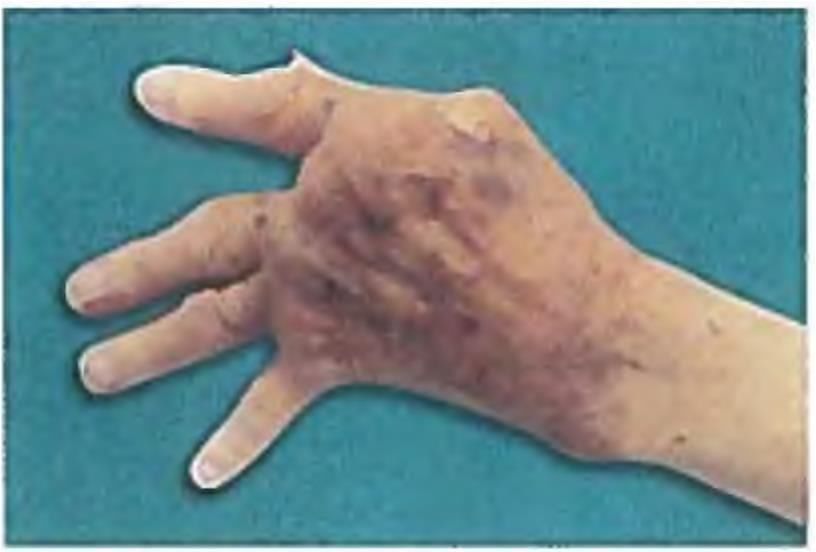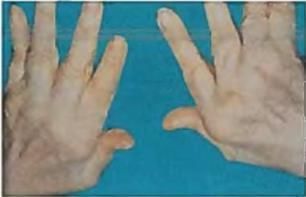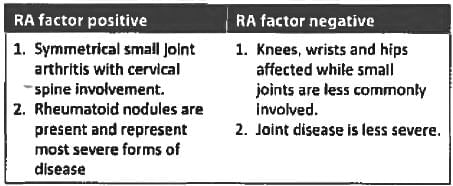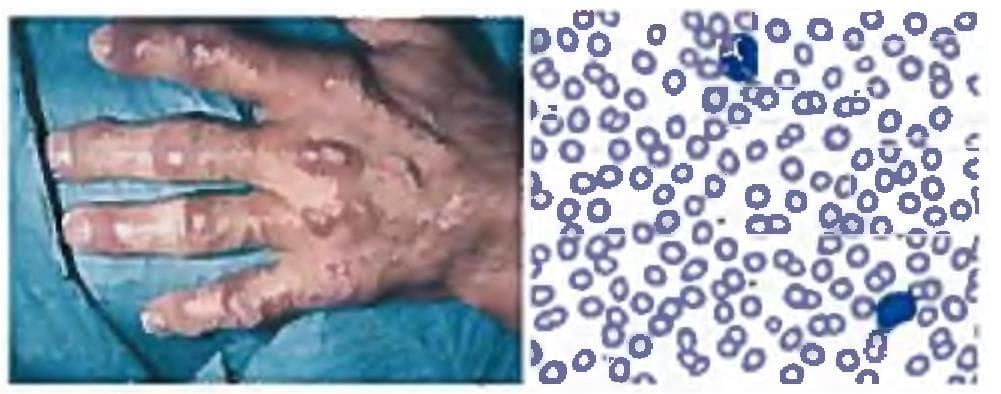Test: Rheumatoid Arthritis - NEET PG MCQ
30 Questions MCQ Test - Test: Rheumatoid Arthritis
Which of the following drugs is not used in management of Rheumatoid arthritis? (AIIMS May 2018)
A woman presents with pain, swelling and redness of knee joint and hand. There were associated complaints of morning stiffness but the swelling spared the DIP joints. The image of the patient's hand is shown. What is the most likely diagnosis? (AIIMS May 2018)


Which is not included in Polymyalgia rheumatic criteria (Healey criteria)? (JIPMER May 2018)
A 55-year-old female on methotrexate presents with continuous pain and swelling of bilateral hand joints. What is the best treatment plan for this patient? (Recent Pattern Jan 2019)

The most specific antibody for Rheumatoid arthritis is? (AP PG 2016)
Consider the following statements about poly-articular juvenile rheumatoid arthritis?
a. It is more common in girls
b. Five or more joints are affected within the first six months of onset
c. Uveitis occurs in 95% patients
d. Rheumatoid factor may be negative
Which of the statements given above are true? (UPSC 2015)
The most common type of juvenile rheumatoid arthritis is: (UPSC 2015)
In long standing rheumatoid arthritis which will be seen? (Recent Pattern 2015-16)
Clinical manifestation of Felty’s syndrome are all except: (Recent Pattern 2014-15)
Rheumatoid arthritis commonly affects the: (Recent Pattern 2014-15)
Caplan’s syndrome is seen with? (Recent Pattern 2014-15)
A patient of rheumatoid arthritis develops sudden onset Quadriparesis increased muscle tone of limbs with exaggerated tendon jerks and worsening of gait. The investigation to be done? (Recent Pattern 2014-15)
Which is the most common site of subcutaneous nodules in rheumatoid arthritis? (Recent Pattern 2014-15)
Not seen in rheumatoid arthritis is: (Recent Pattern 2014-15)
All may be true about Rheumatoid Arthritis except: (Recent Pattern 2014-15)
Hemophilia with Rheumatoid arthritis, analgesic of choice is: (PGI Dec 98)
Which of the following is the most specific test for rheumatoid arthritis? (Recent Pattern 2014-15)
Which type of anemia seen in Rheumatoid arthritis? (Recent Pattern 2014-15)

















